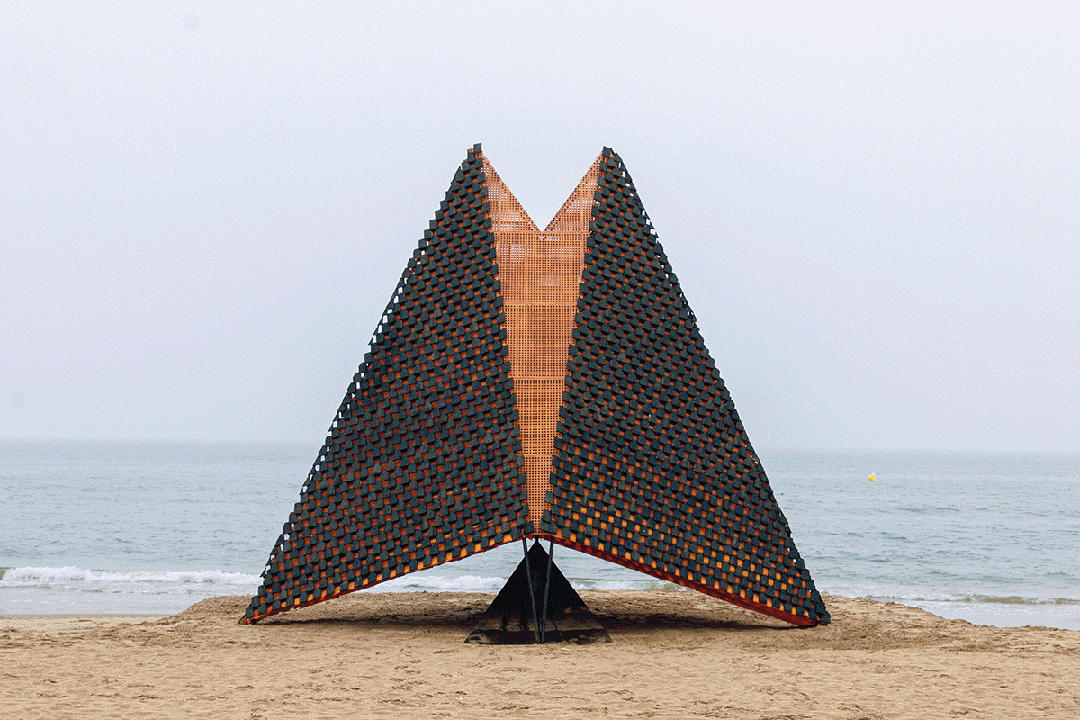
设计单位 合木建筑工作室
装置地点 河北秦皇岛
建成时间 2024年6月
本文文字由设计单位提供。
01 背景
Background
火翼作为海边的篝火装置,在今年阿那亚戏剧节中热度居高、参与人数众多。其位置设定在海边巡游线路的终点,它的燃烧是当晚活动的高潮和尾声。
Fire Wings, as bonfire installation by the seaside, is one of the most popular and highly attended events at this year's Aranya Theater Festival. Positioned at the terminus of the festival’s coastal parade, the bonfire serves as both the peak and the finale of the evening’s celebrations.
火翼装置位于秦皇岛阿那亚内部步行路与大海之间的沙滩上,拥有开阔、唯美的环境背景,但这同时也意味着苛刻的实施条件——不确定的风雨天气和松软的沙滩地面。
Located on a stretch of beach between the festival’s walkways and the open sea, this installation benefits from a vast and enchanting natural setting but also faces challenging conditions—shifting sands, unpredictable winds, and rain.
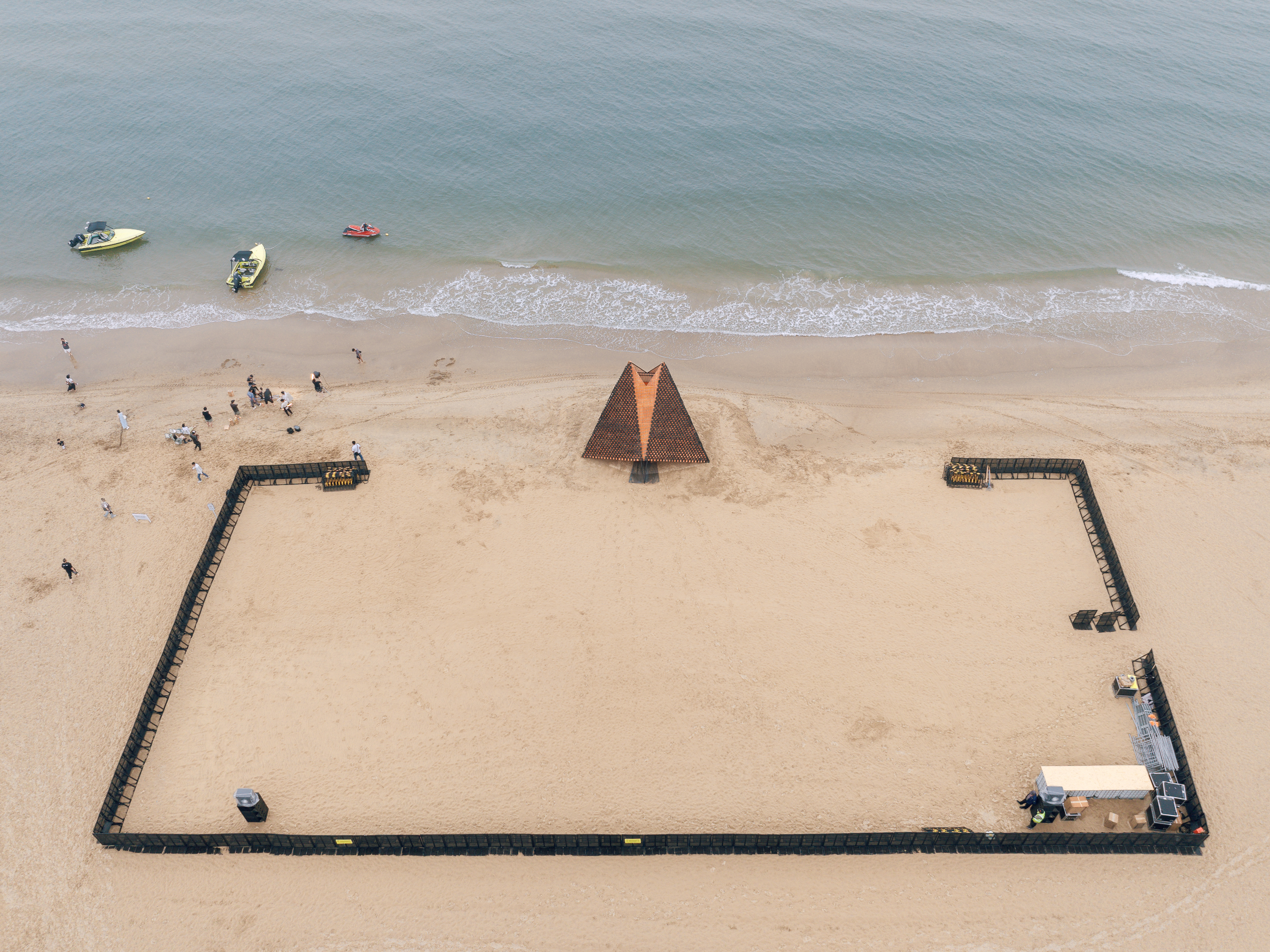
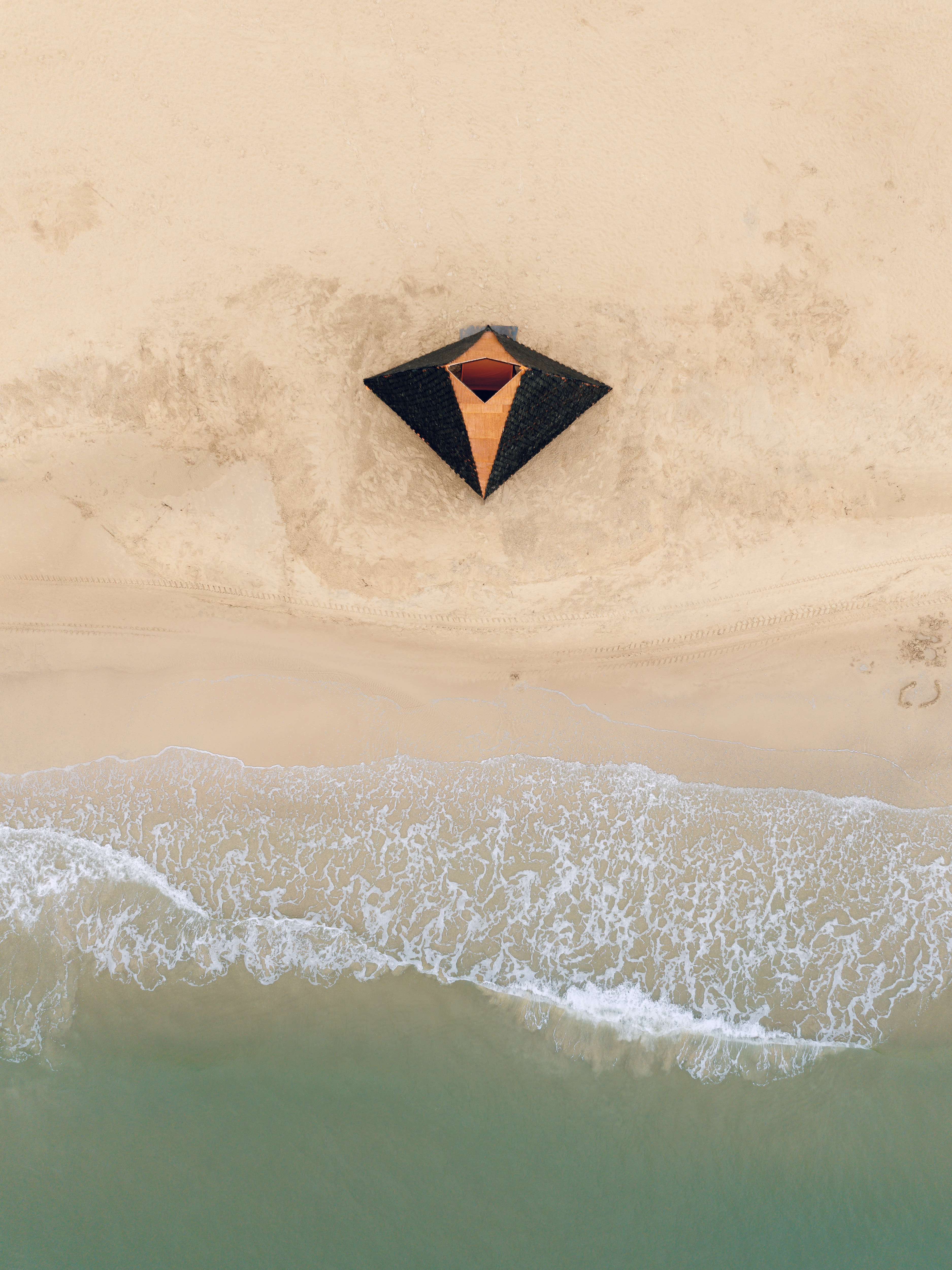
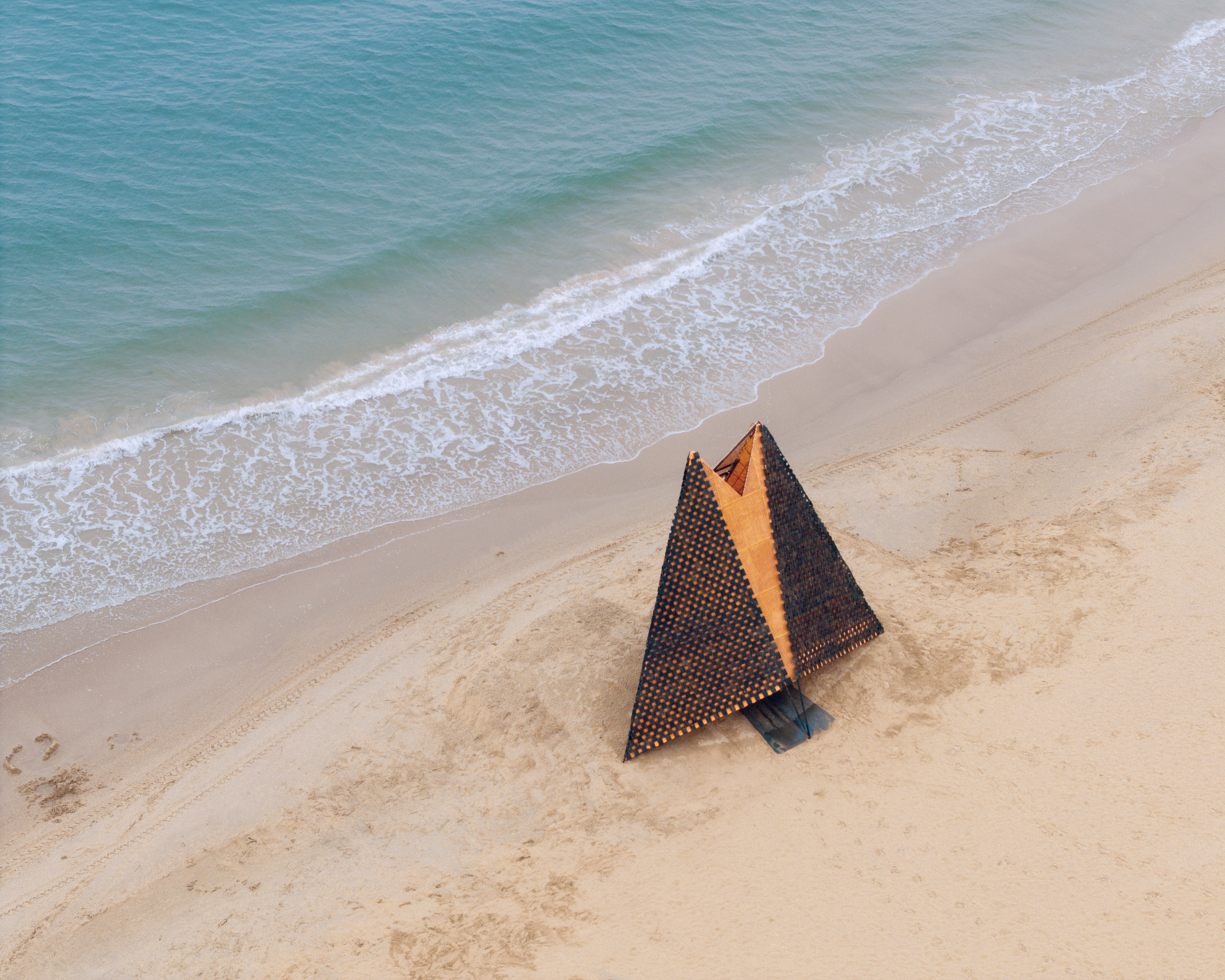
02 解题
Concept
海边篝火已是阿那亚戏剧节持续三年的公共艺术项目,前两年均由艺术家设计。本次则由建筑师作为主导,以建筑而非造型雕塑的方式来解答这一命题。
For the past three years, the seaside bonfire has been an enduring public art project at the Aranya Theater Festival, with artists leading its design in prior years. This year, however, the vision was designed by architects, introducing an architectural rather than purely sculptural approach.
燃烧大型篝火作为民间习俗和文娱活动形式,在国内外均属常见。如何做出与众不同的呈现,是设计团队着重思考的问题。
The tradition of igniting grand fires resonates across diverse cultures, symbolizing both celebration and ritual.
设计借鉴了中国南方潮汕地区的乡村传统民俗“烧蚁窑”[1],该原型有着独特的燃烧呈现和变化的物理关系——火与构筑物之间接触、相融、分离,这给予了设计团队启发。
The design team aimed to present a bonfire unlike any before, drawing inspiration from the ancient "ant kiln burning" customs in the Chaozhou-Shantou region of southern China. This tradition informed the intimate dance between fire and structure, where contact, fusion, and separation converge.
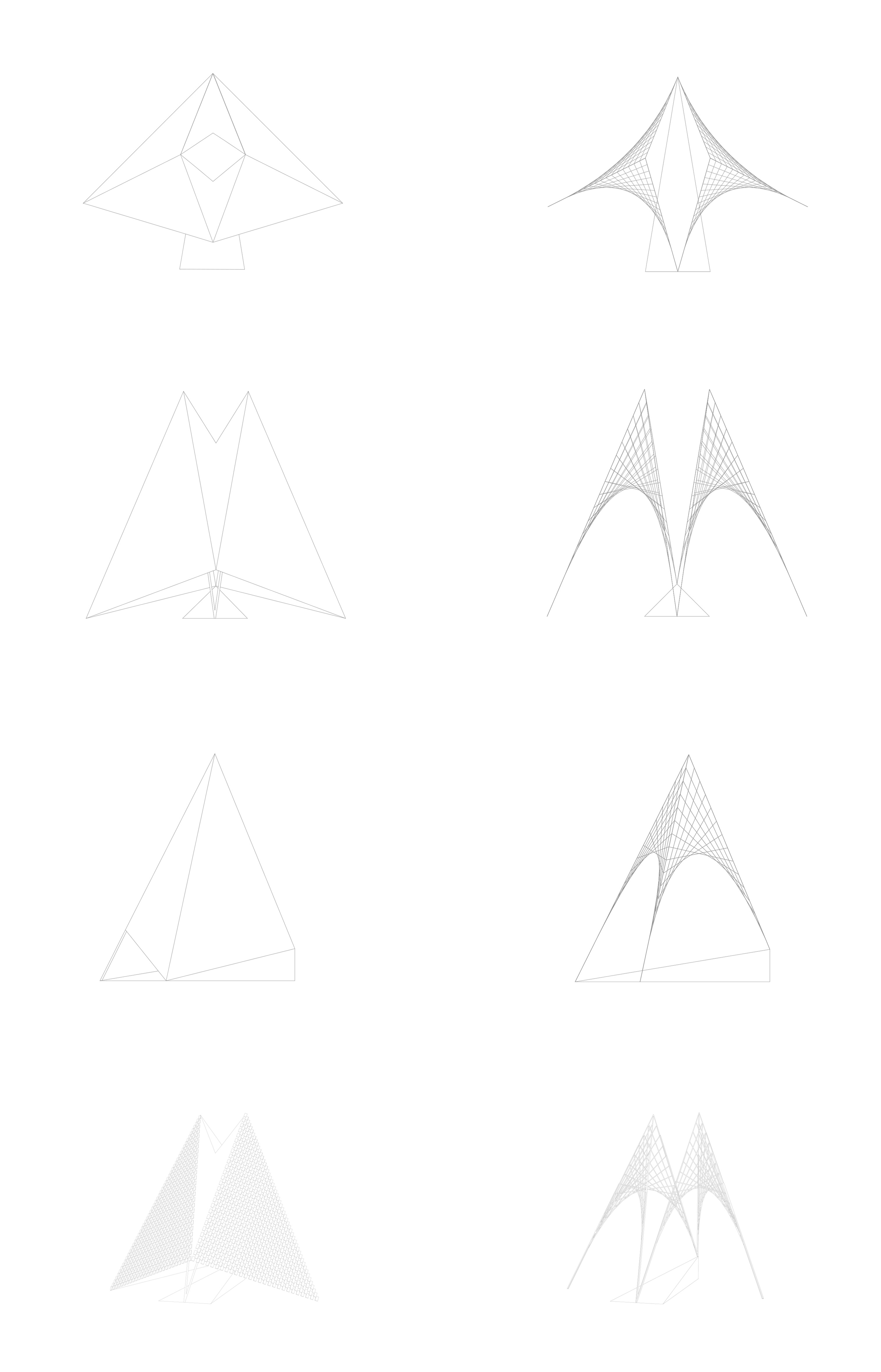
03 火与物
The Dance of Fire and Form
设计的核心是展现火带来的物质状态蜕变,以及篝火燃烧中随时间变化的不同形态,从而呈现多层次的视觉场景,并触发观者的多重体验与情绪。由于火的介入,装置有机会被界定为燃烧前、燃烧中、燃烧后三种状态。
The core of the design focuses on the transformation of material states brought by fire and the different forms of the bonfire over time, presenting layered visual scenes to evoke multiple experiences and emotions in the viewer. With fire involved, the installation is defined by its stages: before burning, during burning, and after burning.
燃烧之前:白天的篝火装置为静态的、简练的几何实体,外部黑色镂空表皮,隐约透露内部炽焰般的颜色。
Before Burning: During the day, the bonfire installation appears as a static, simple geometric entity, with an outer black perforated shell subtly revealing a glowing orange interior.
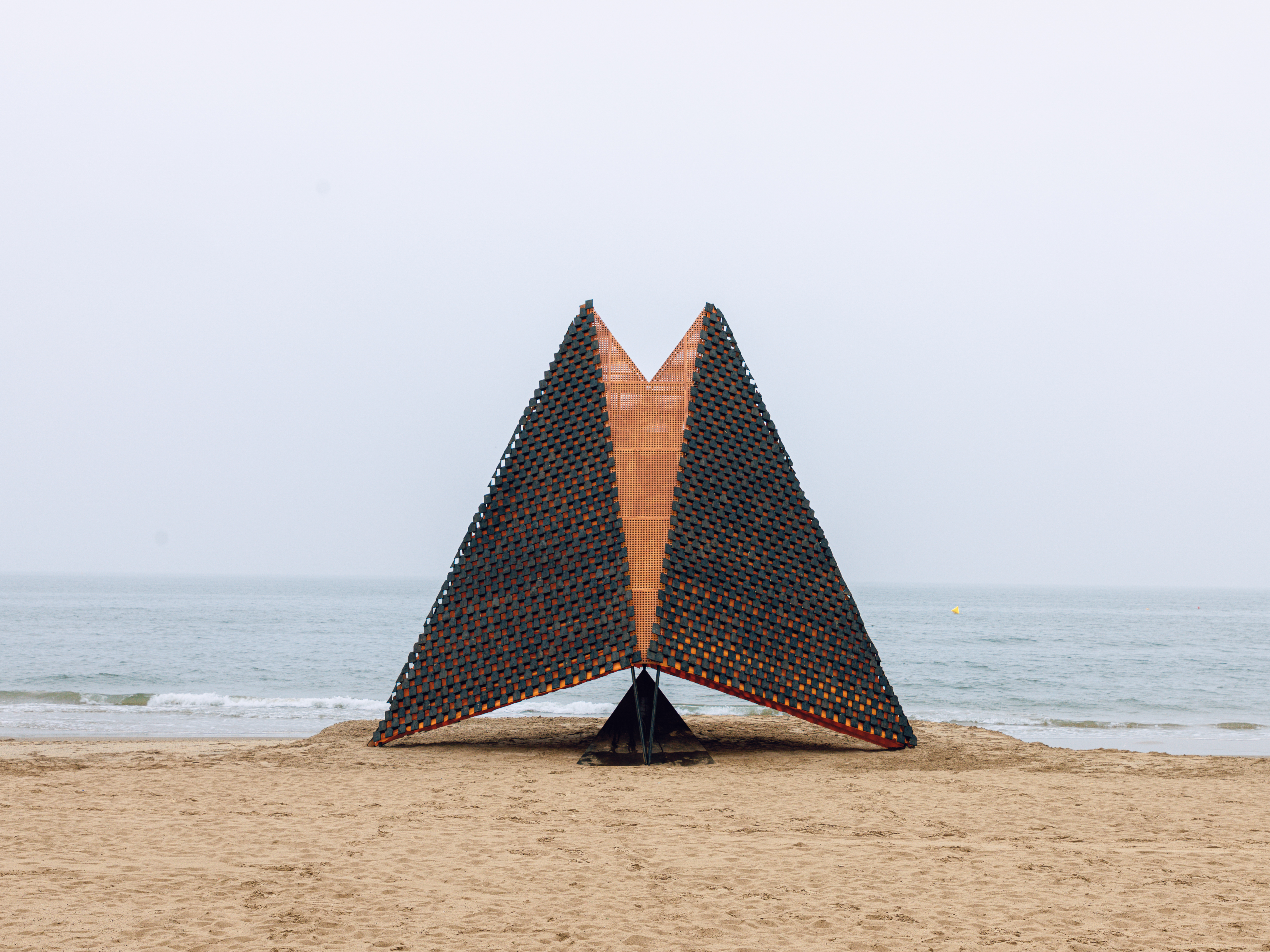
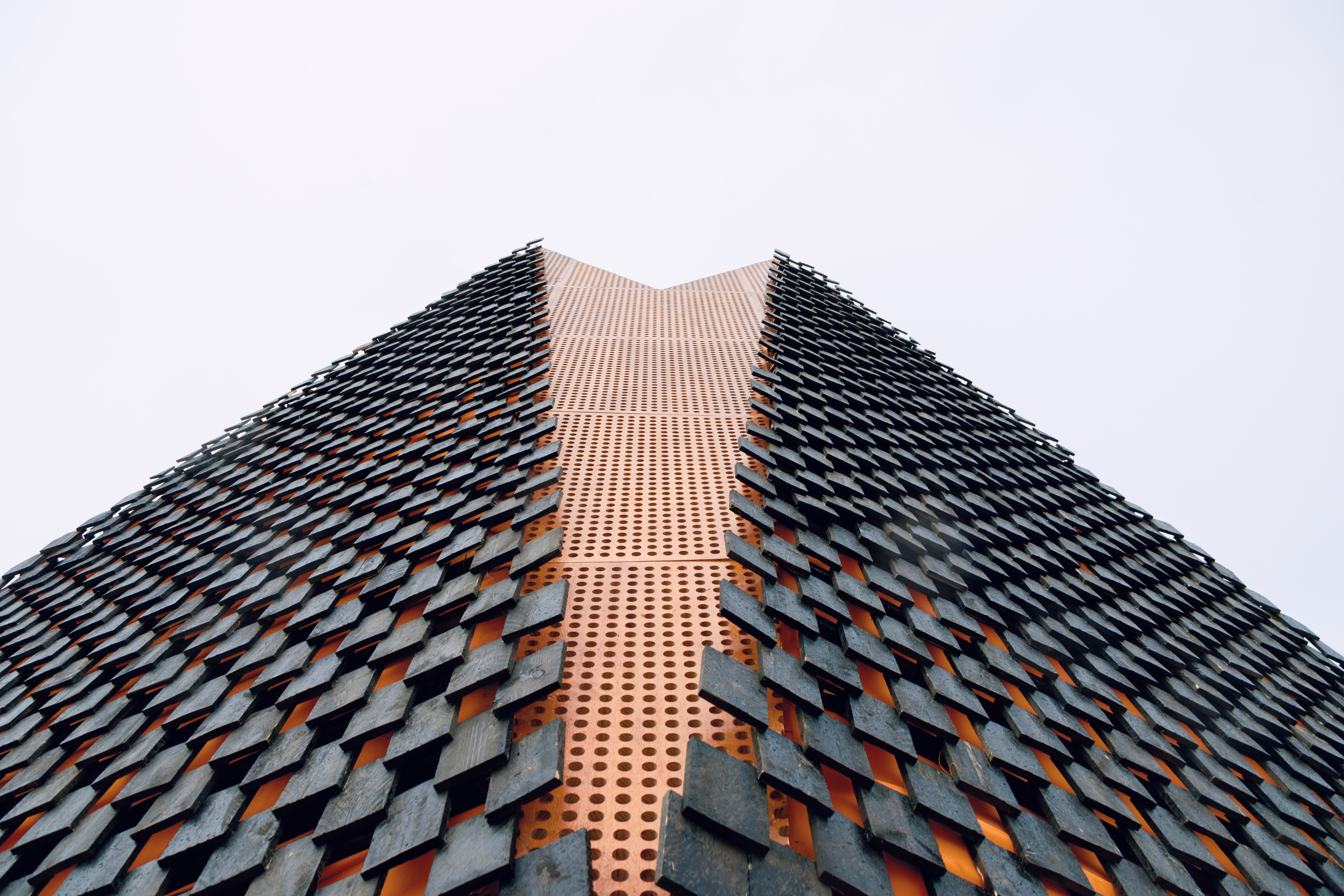
燃烧过程:夜晚的篝火将经历十五分钟左右的燃烧,可以分为三个阶段。第一阶段内置点火筒燃烧,火在内部,表皮镂空形成剪影,像灯笼一般,呈现出轻盈感;第二阶段表皮燃烧,火蔓延到装置的外围,进而覆盖整个表面,燃烧下的装置热烈又壮观;第三阶段表皮木片坍落,火势逐渐减弱,光线暗淡起来,表皮木片倏倏地掉下,火焰由此衰颓。
As night falls and the flames are kindled, the bonfire passes through three dynamic stages:
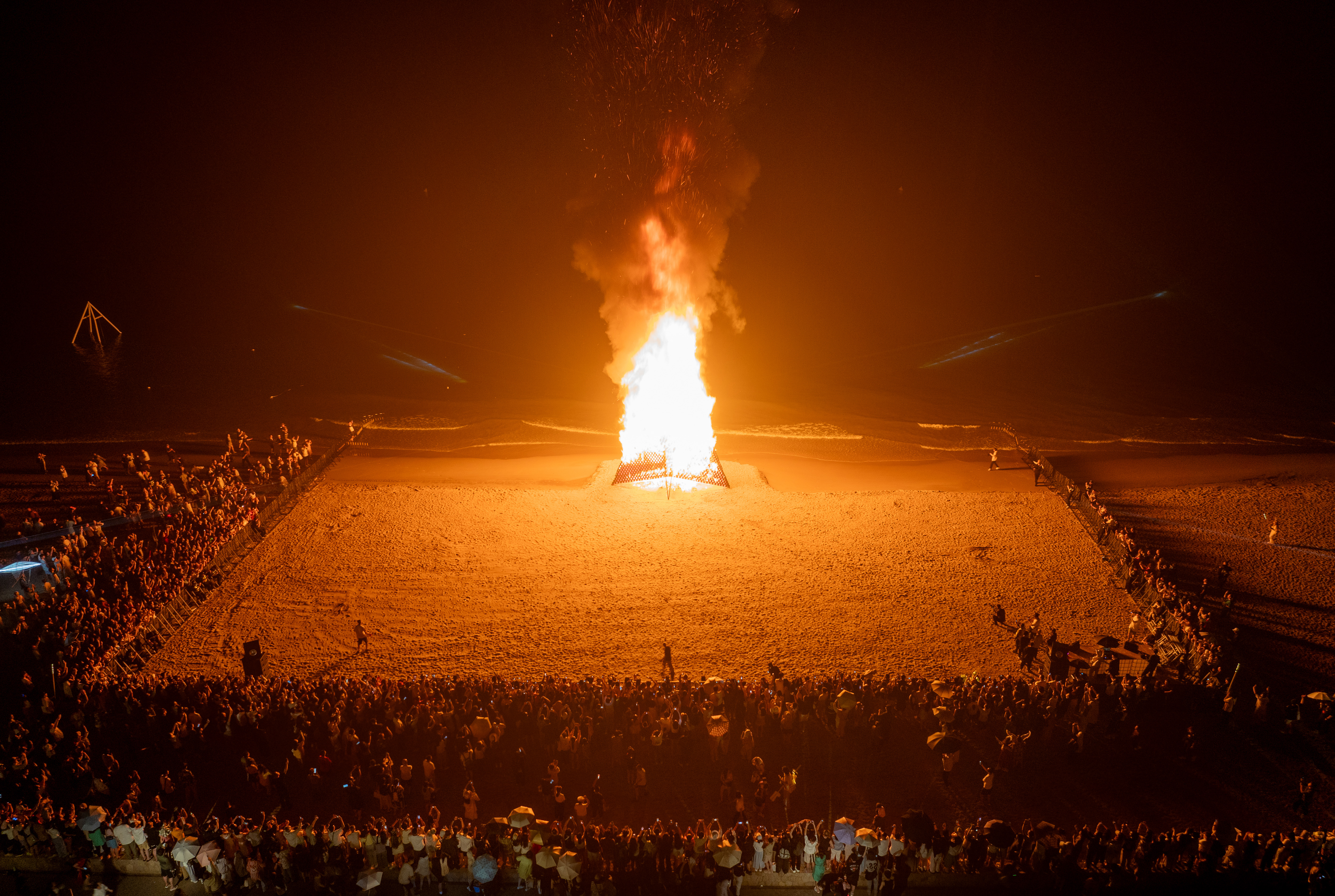
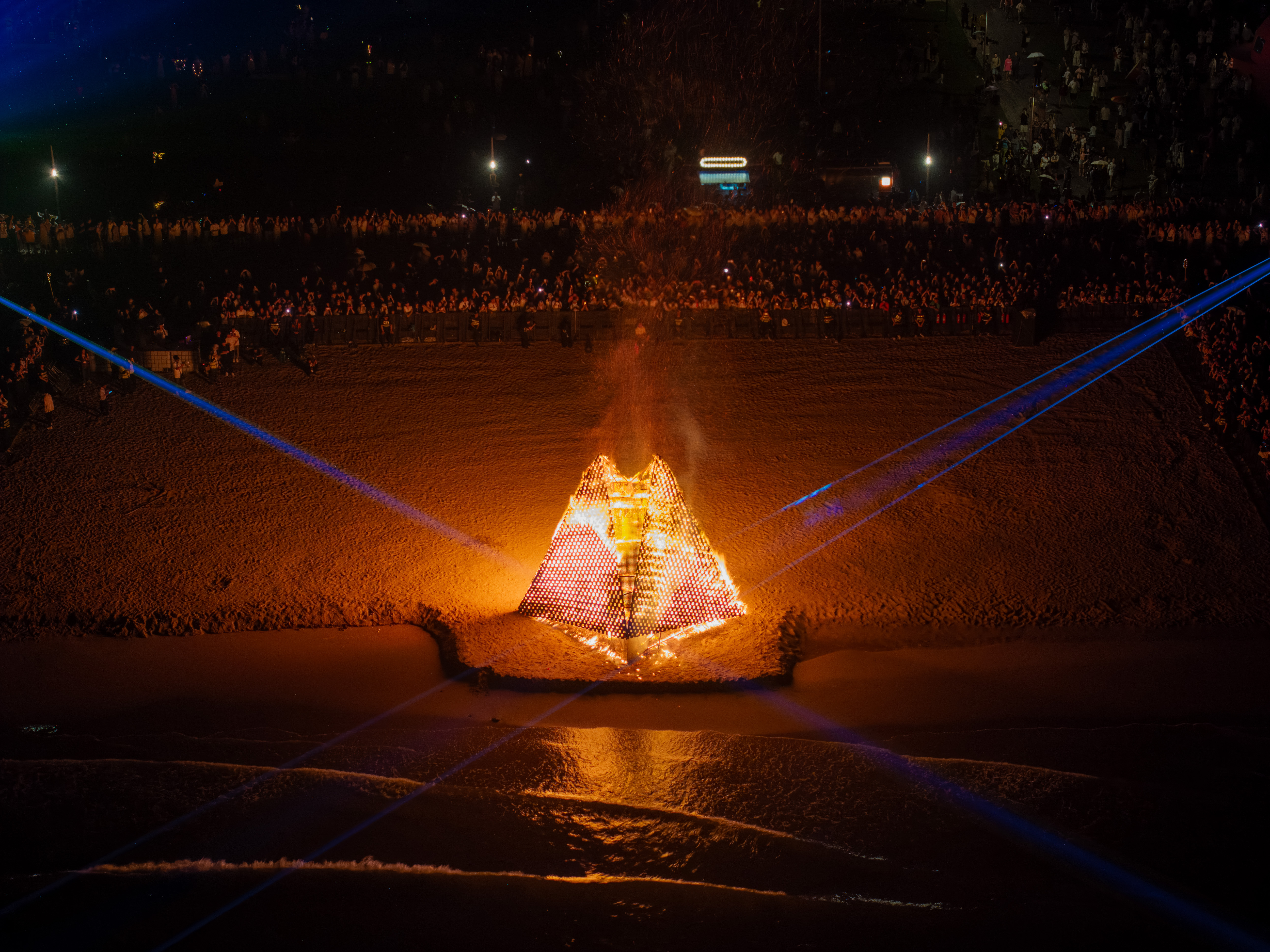
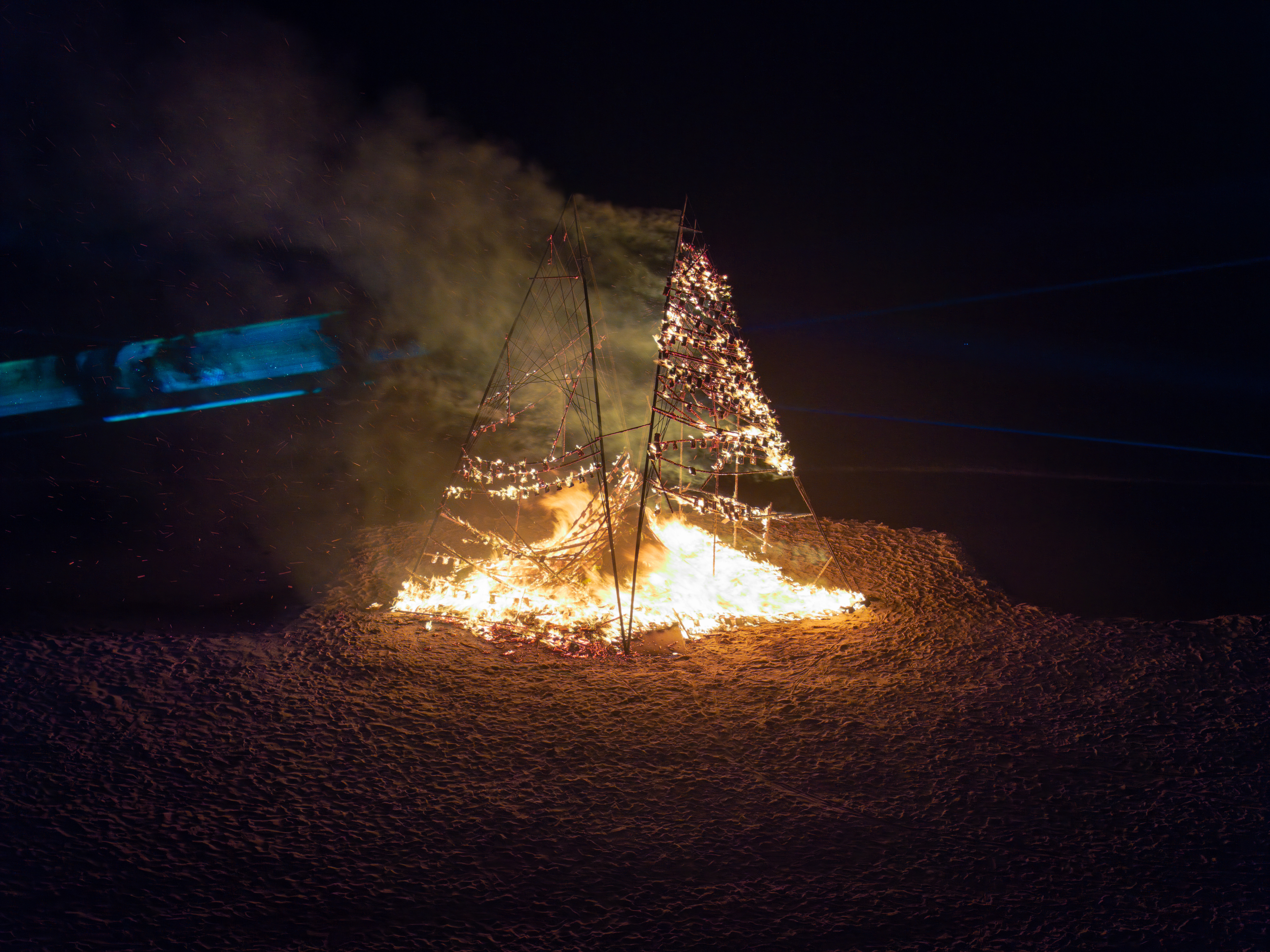
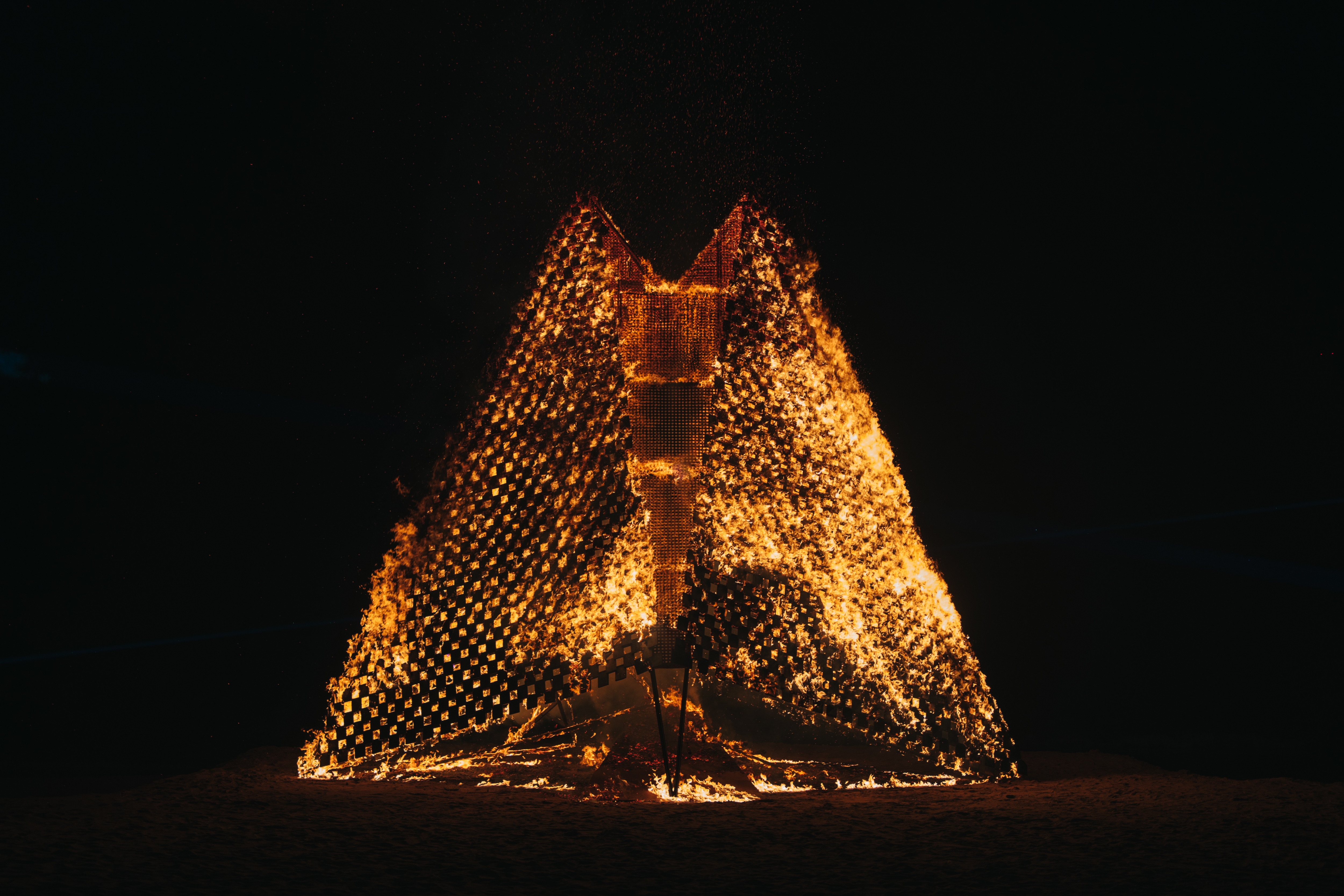
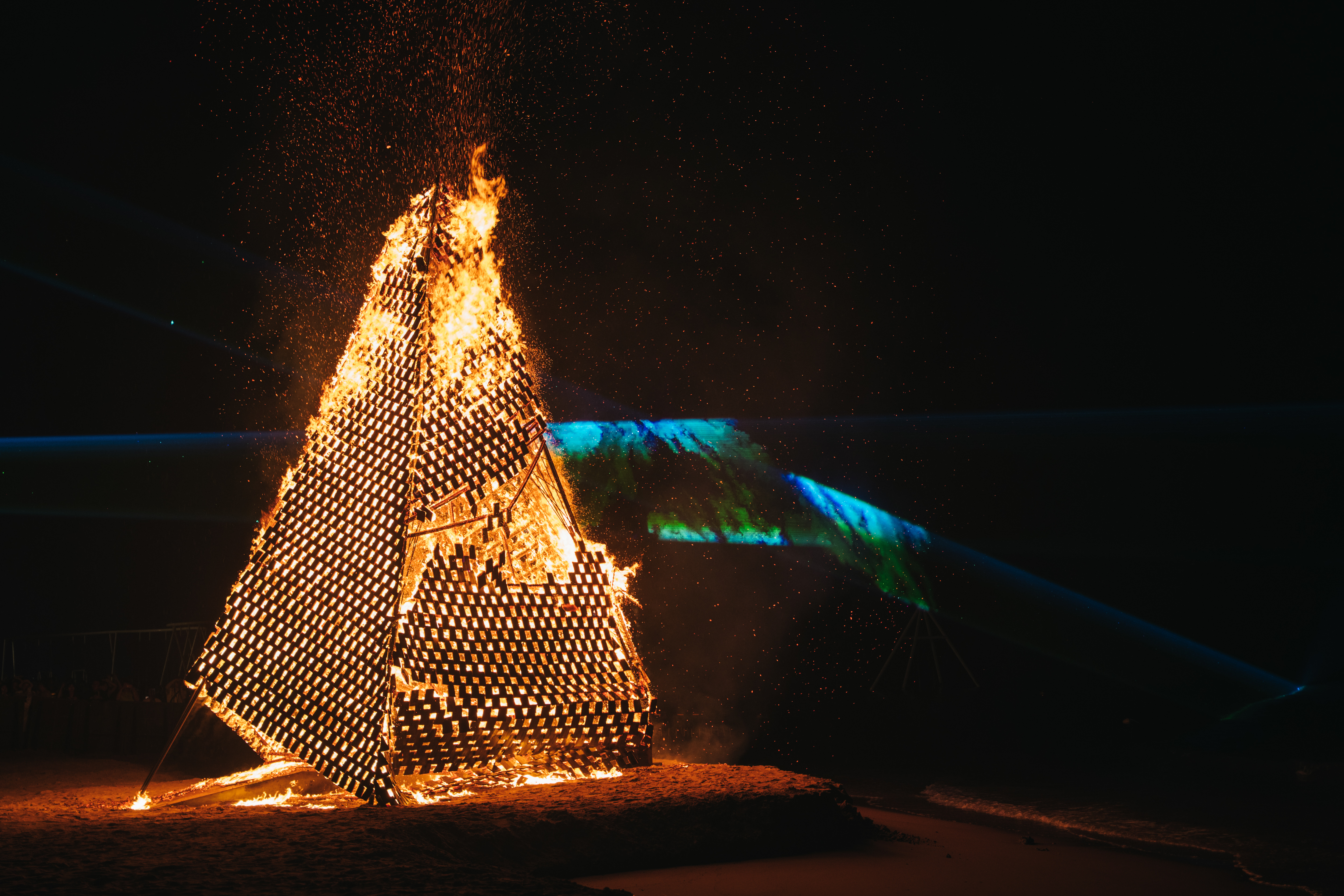
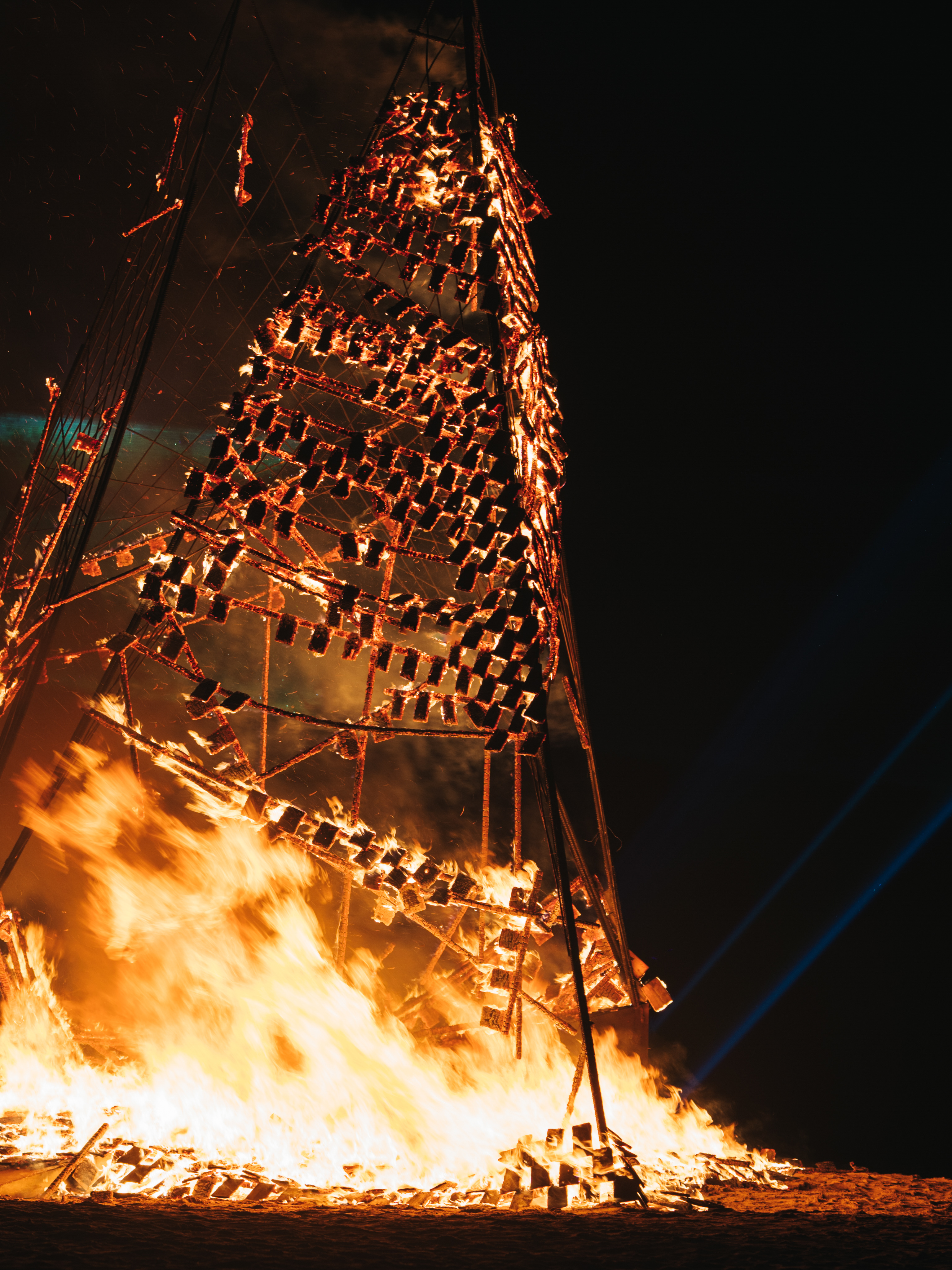
燃烧之后:火光熄灭,剩下纤细的钢筋骨架,虚空、静寂。暗色的天空中,闪电不期而至、雨滴零星滴下、雷声轰隆而来,与火共舞、与音乐共鸣,给作品增添了难以名状的力量感以及动态自然的美感。大海、沙滩、夜空、雷电、雨水、篝火,为现场观者送上无以复加的慌乱与惊喜。
After Burning: After about 15 minutes of burning, only a delicate steel skeleton remains, giving a sense of void and silence. The dark sky, occasional lightning, sporadic raindrops, and thunder amplify the atmosphere, adding a raw, dynamic beauty of nature. The sea, beach, night sky, lightning, rain, and bonfire combine to offer the audience an unforgettable, layered sensory experience.
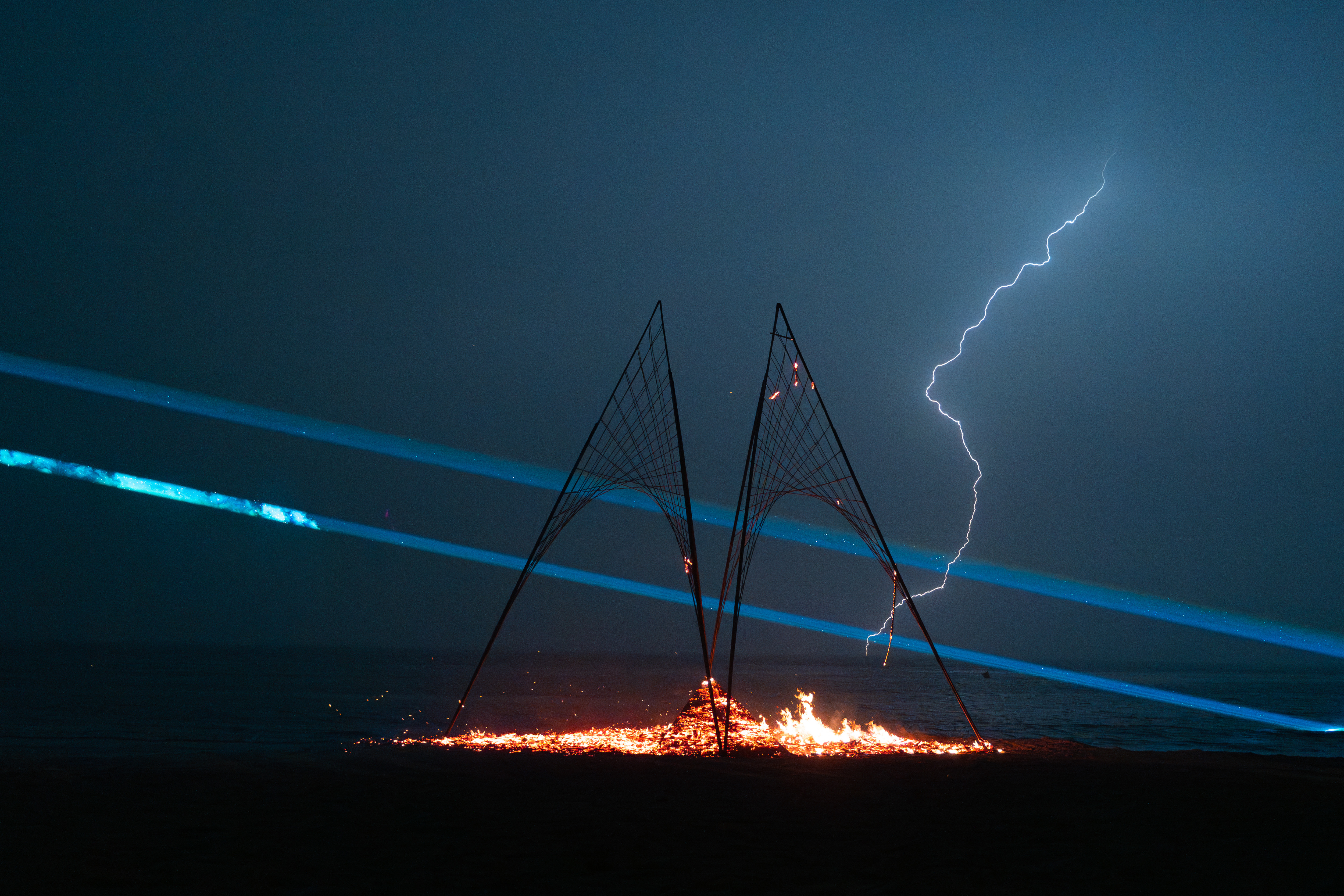
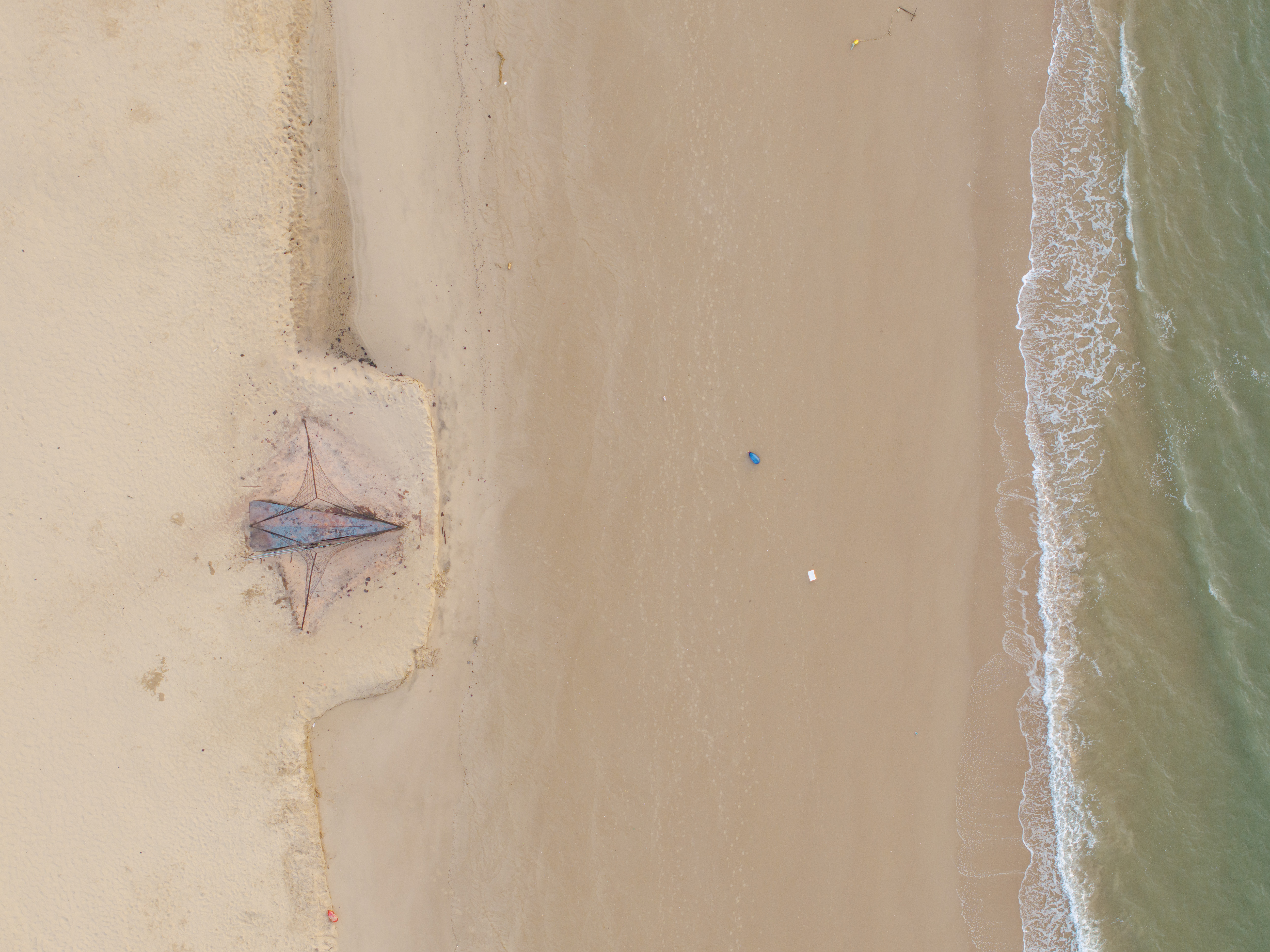
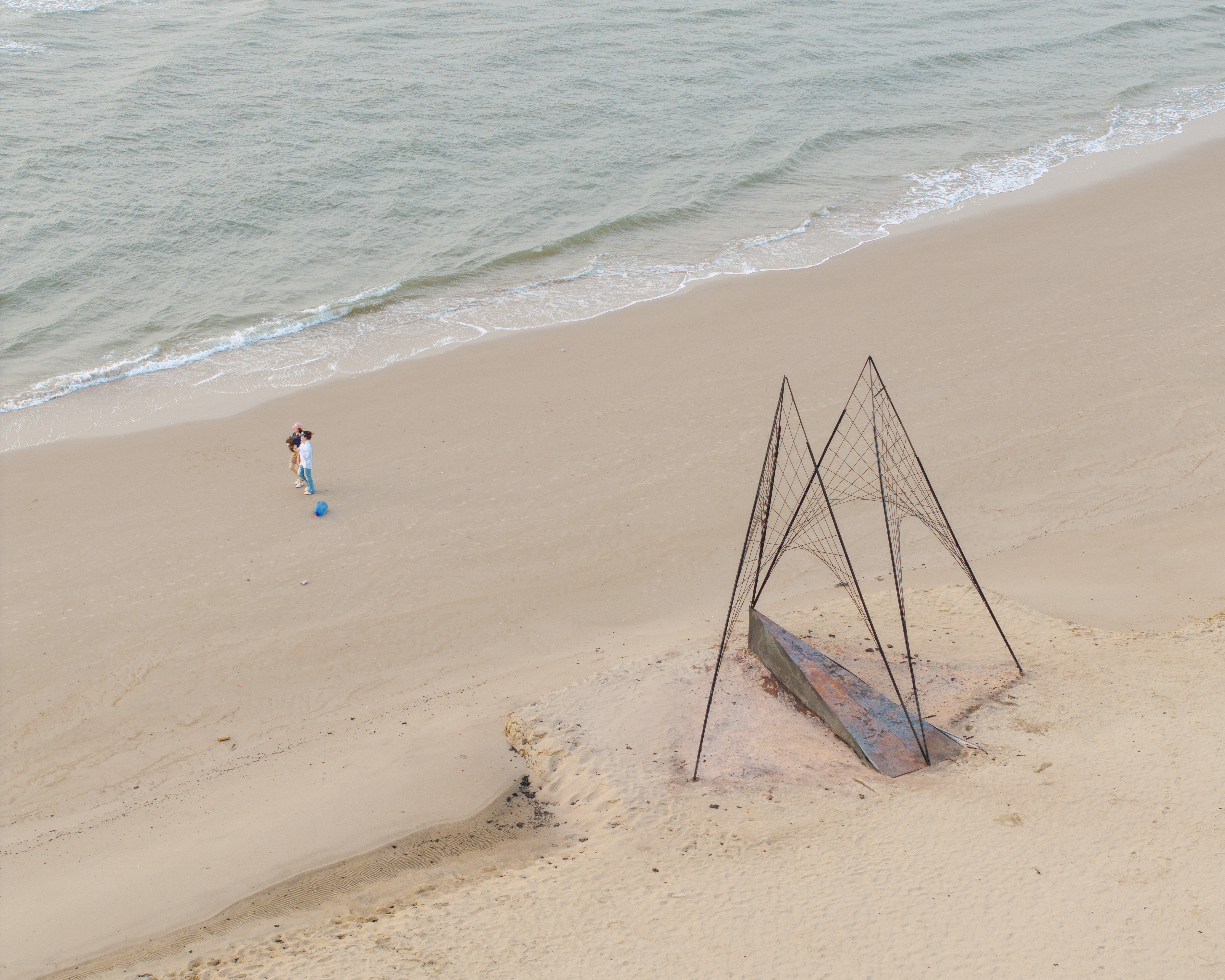
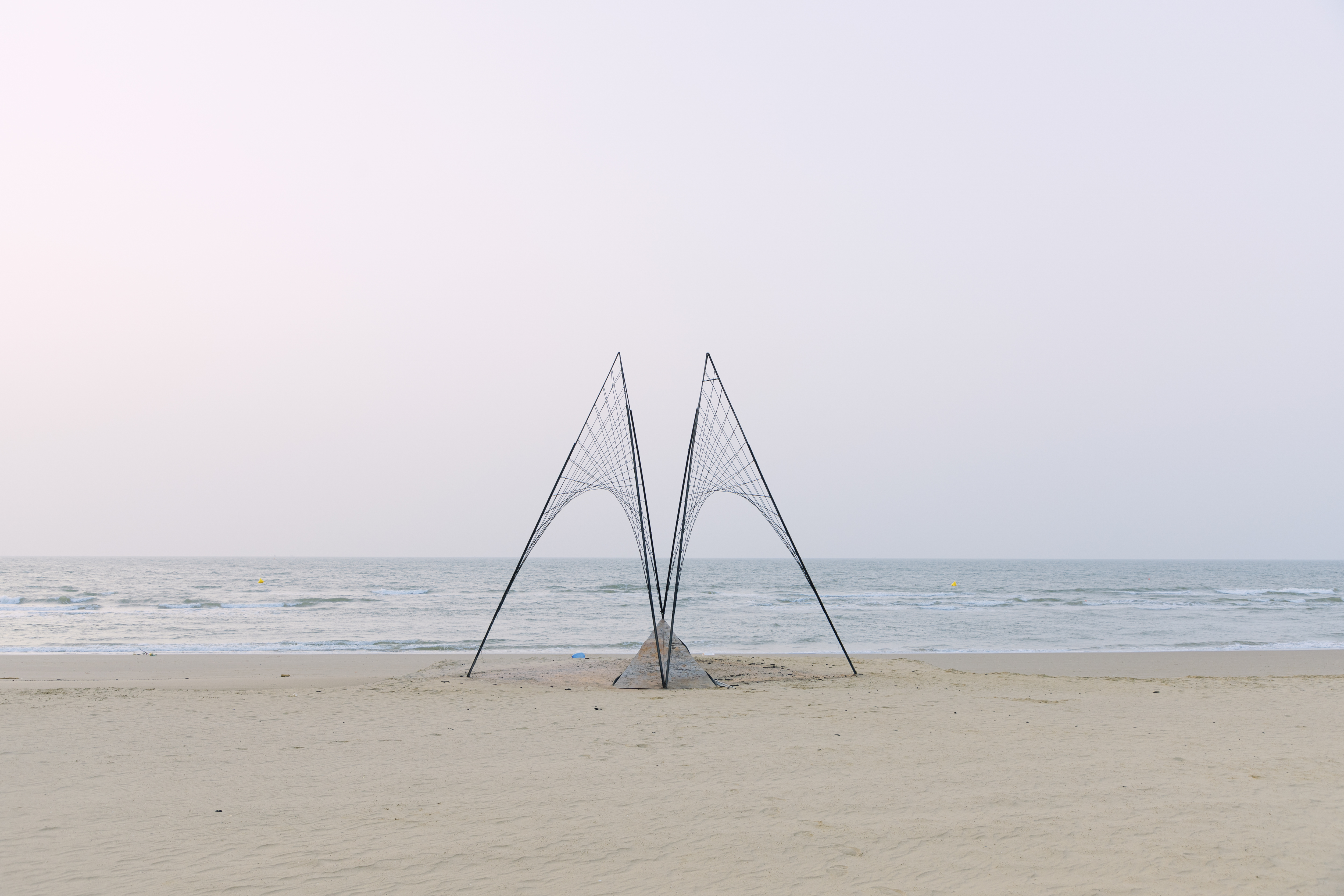
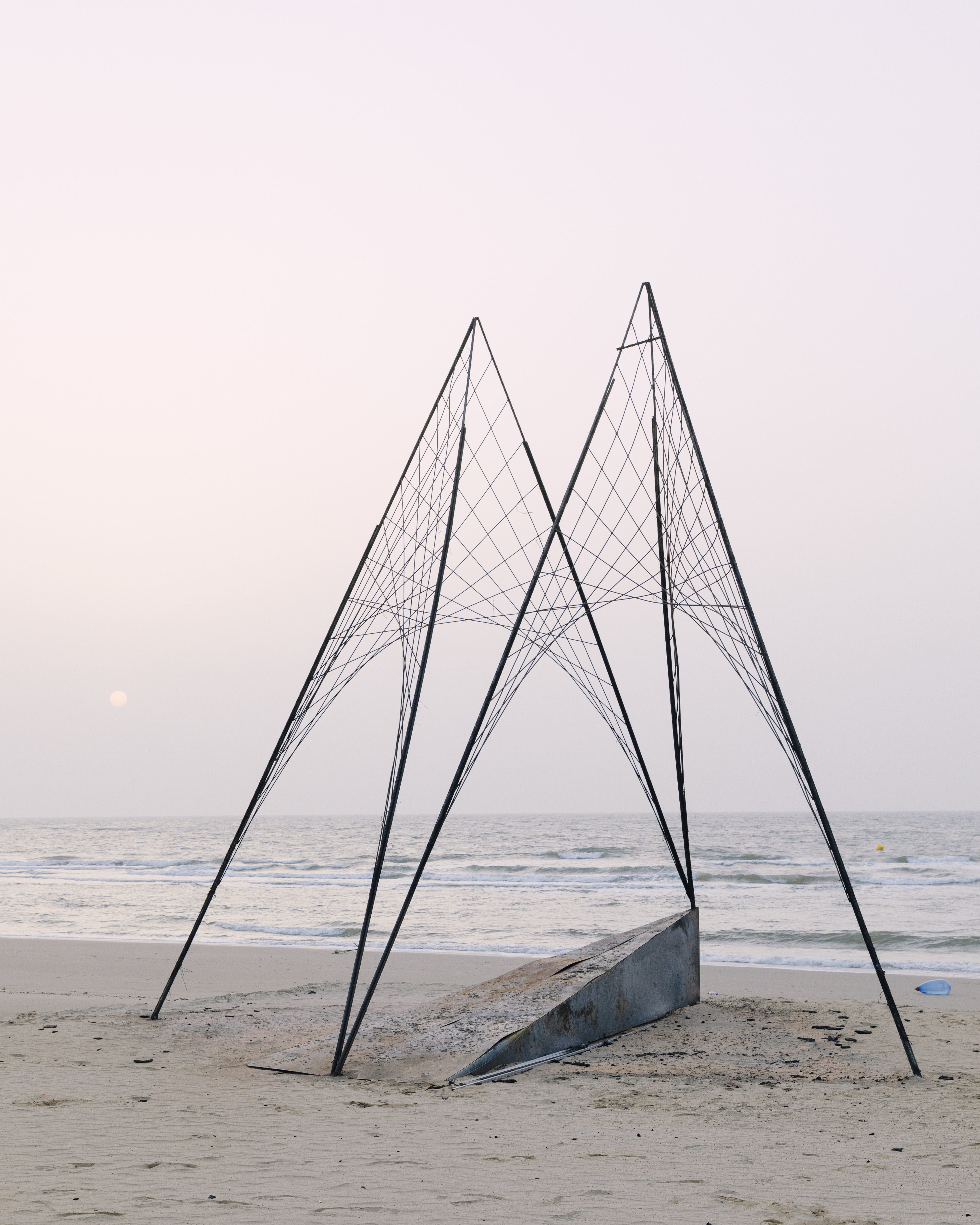

04 设计实现
Design and Realization
火翼装置占地8米×6米,高7米,由基础、钢筋骨架、木质外表皮、内置点火筒四部分构成。整体形态的设计同时考虑了下部点火、顶部拔风、外围通风等燃烧因素。装置下部的基础由钢板和钢脚组成,均埋入沙中,钢板几何体内装沙作为配重;装置骨架分为四个单元,由螺纹钢与钢筋形成人字形网片;装置镂空的表皮由小块木板层叠阵列而成,并由橙色布料作为底色;内部方形筒作为内胆,是点火的位置、燃烧的起点。
The Fire Wings installation covers an area of 8m x 6m with a height of 7m, and it consists of four main parts: a foundation, a steel framework, a wooden outer shell, and an internal ignition cylinder. The overall design thoughtfully considers combustion factors, including ignition at the base, exhaust at the top, and ventilation around the perimeter. The foundation is anchored in the sand, with both the steel plate and lower steel legs embedded and filled with sand for ballast. The steel framework is divided into four units, with A-frame grids made from rebars. The perforated outer shell is created by layering small wooden panels, backed by orange fabric. The inner square cylinder serves as the core, providing the ignition point and the origin of the flames.

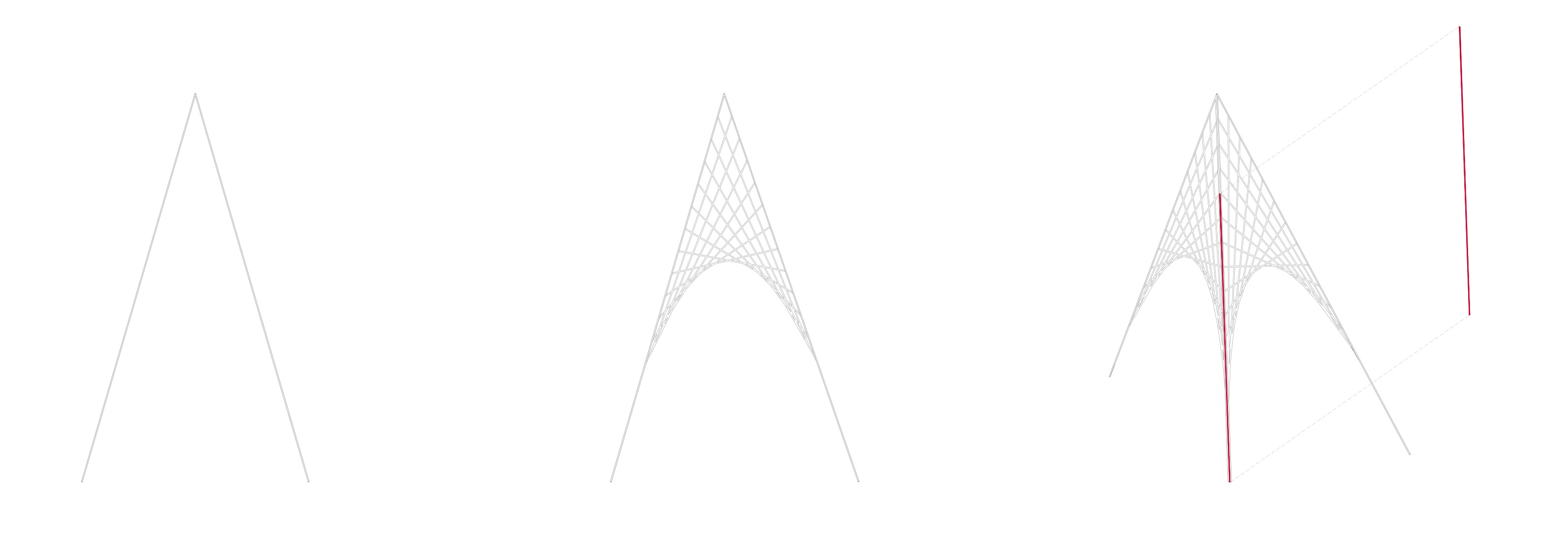
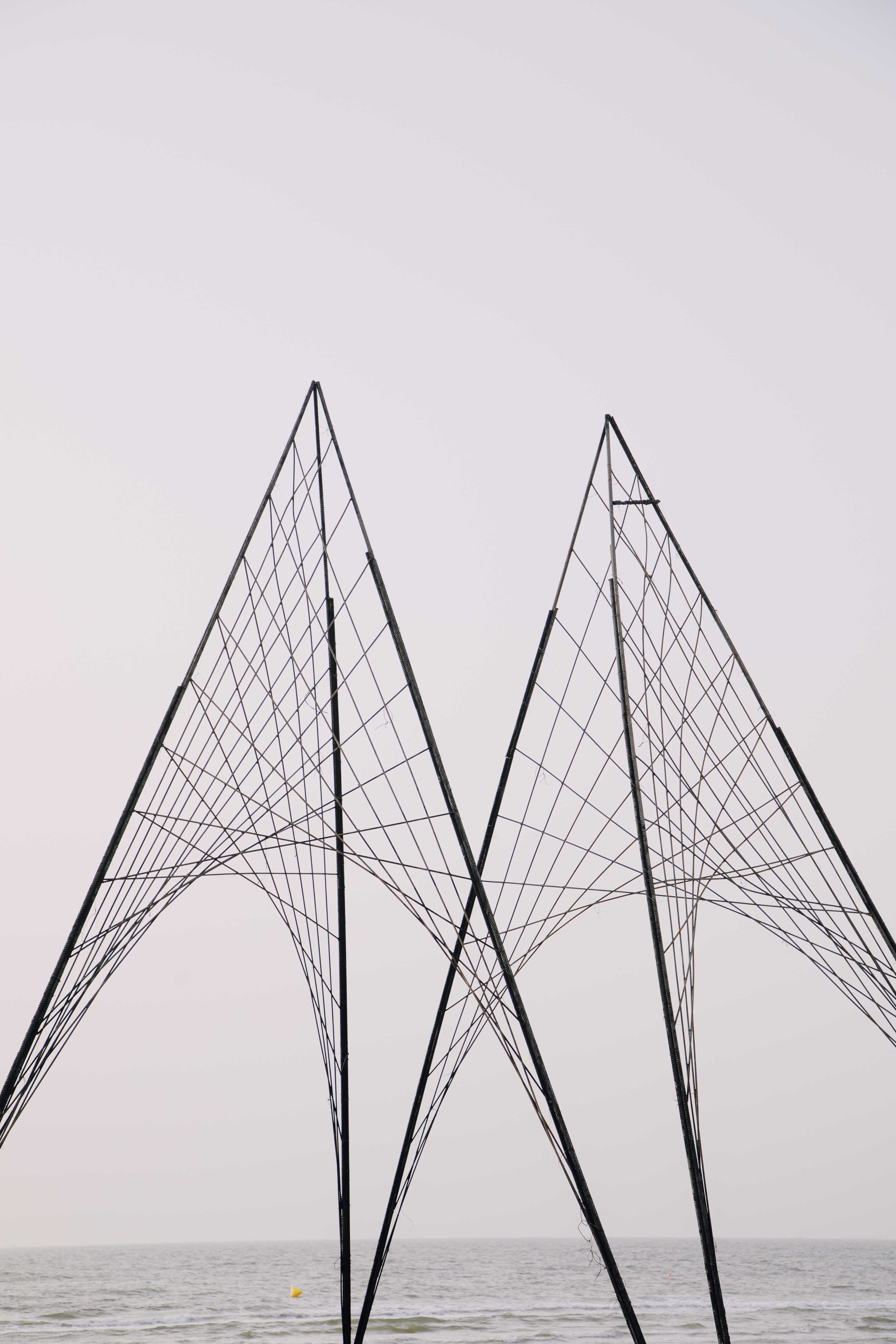

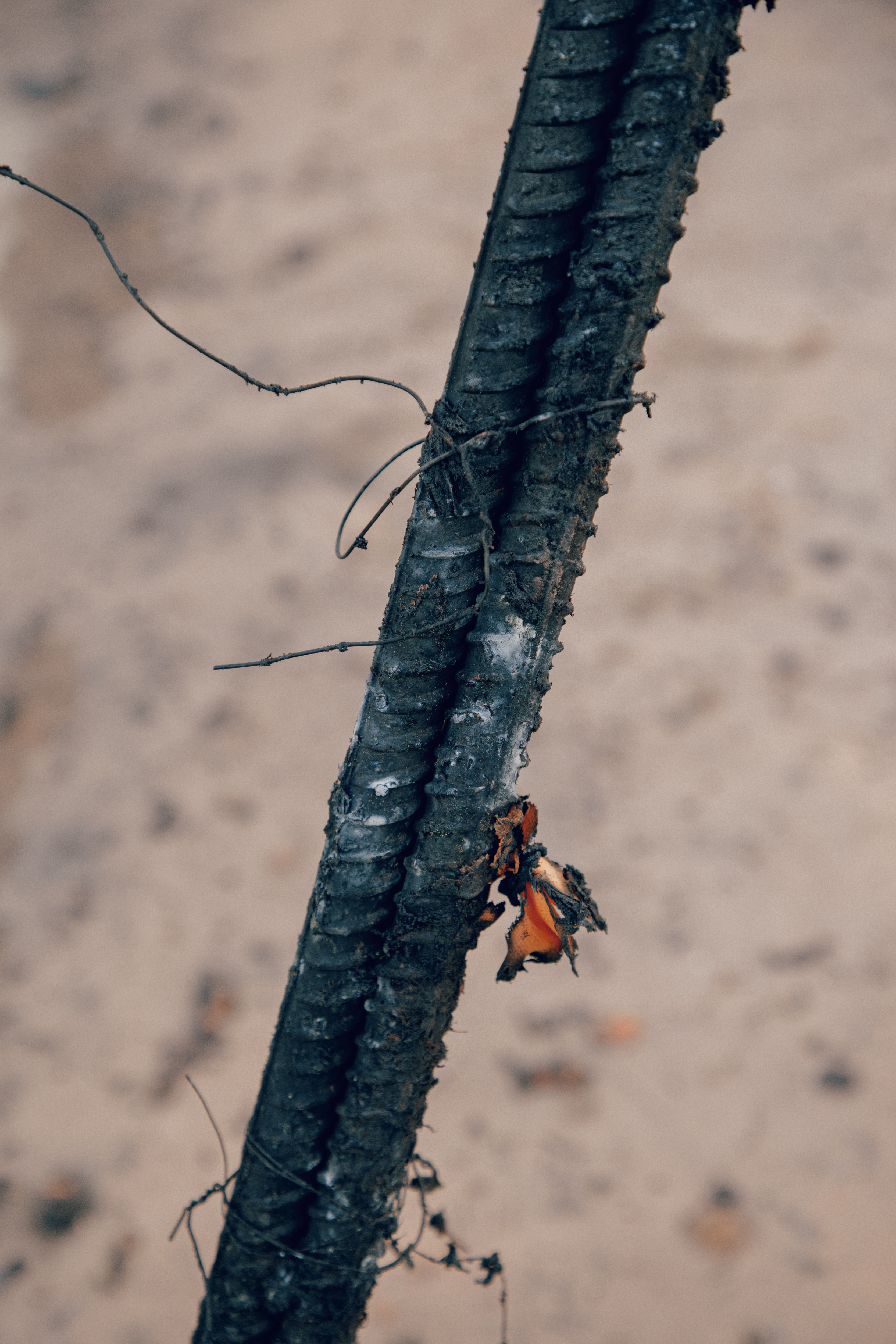
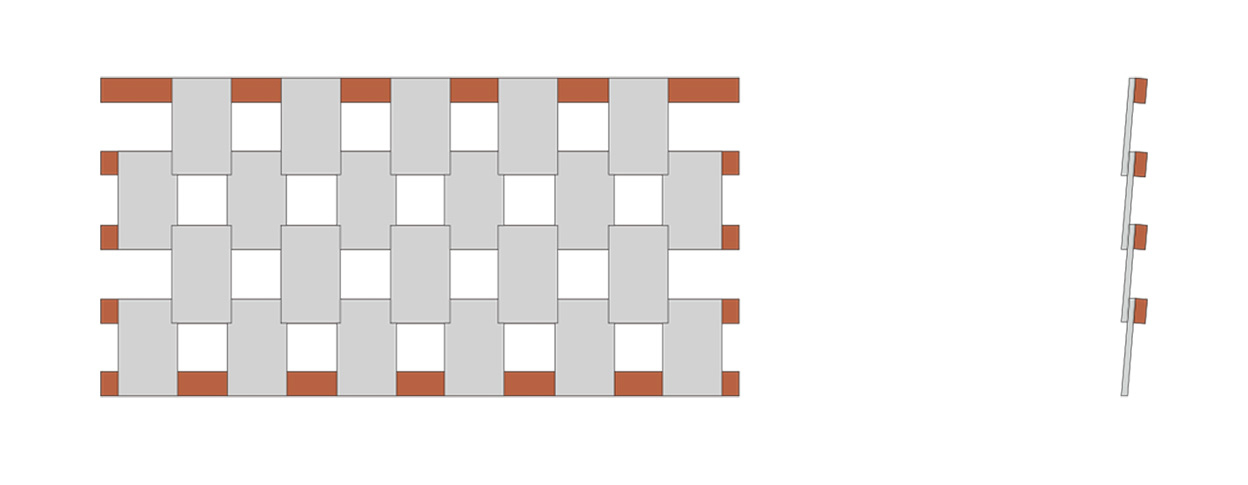


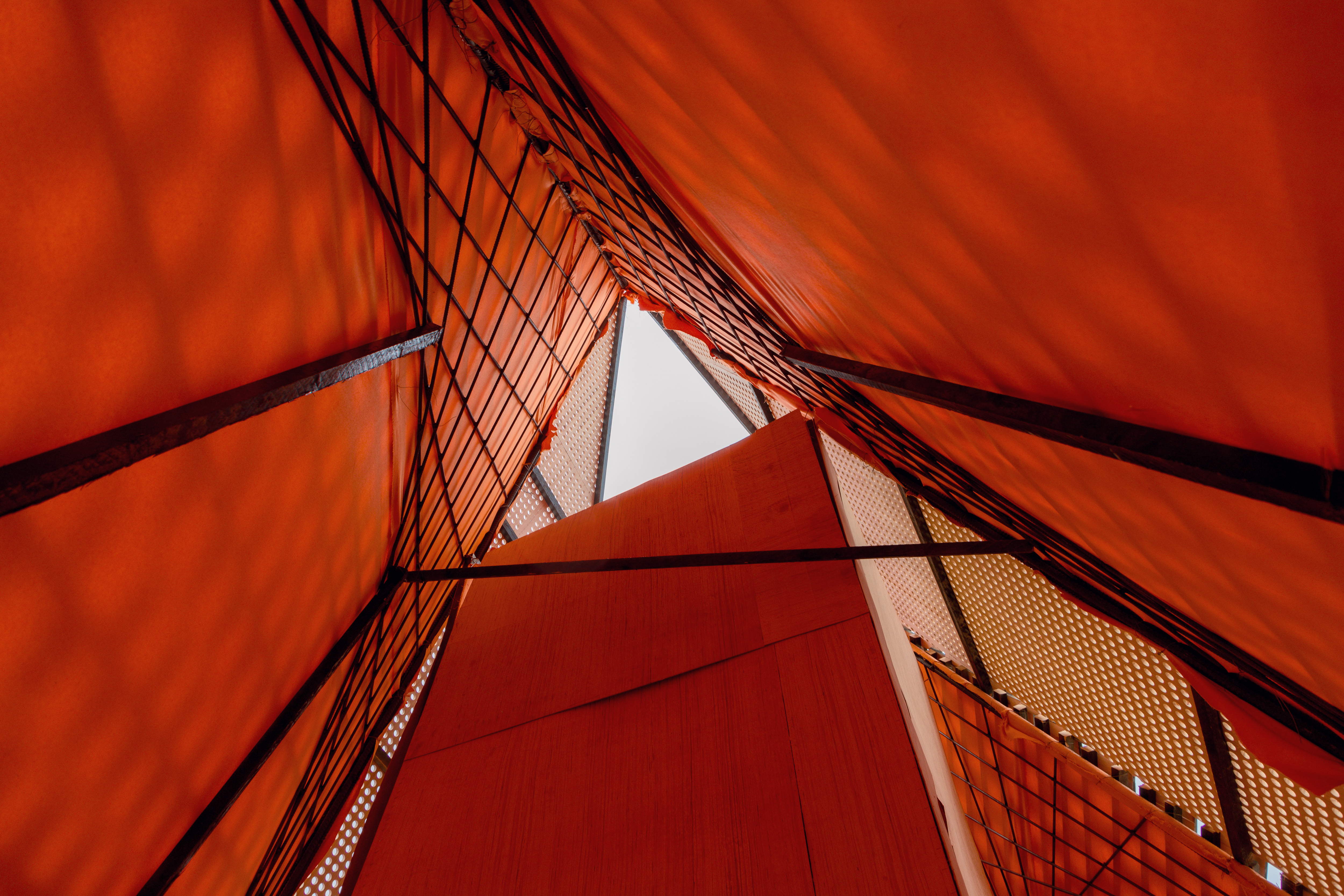
05 结尾
Conclusion
火是能量的一种表现形式,可燃物是火存在的媒介与载体。千百年来,人类对火的使用和依赖,使它逐渐拥有了多重属性——功能性、娱乐性、艺术性、精神性等。当它超越了功能性,必将被不同区域、不同文明的人群赋予独特的文化基因。
Fire, as a form of energy, relies on combustible material as its medium or carrier. Across centuries, fire has been endowed with multiple meanings—function, entertainment, artistry, and spirituality. When elevated beyond its functional use, fire becomes a symbol, infused with cultural meaning that resonates across regions and peoples.
火翼装置的燃烧是短暂的、瞬时的,希望这一极具仪式感和群体性的活动在娱乐大众之余,也能成为传播文化的载体。
The Fire Wings installation, though ephemeral, embodies a ritualistic and communal spirit. Beyond providing mere entertainment, it aspires to serve as a vessel of cultural memory, igniting the shared essence of a fleeting moment that lingers long after the flames have died.
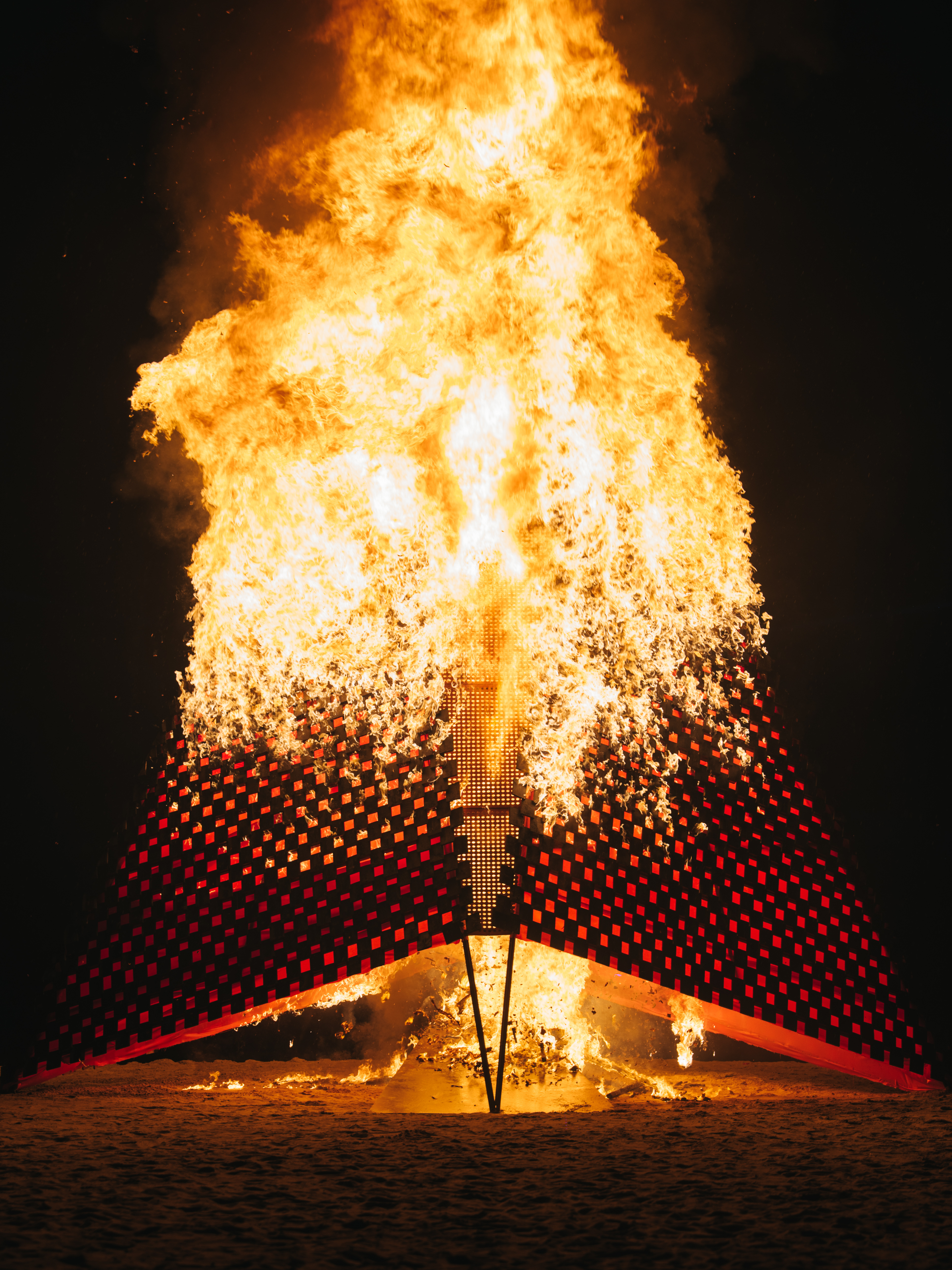
设计图纸 ▽
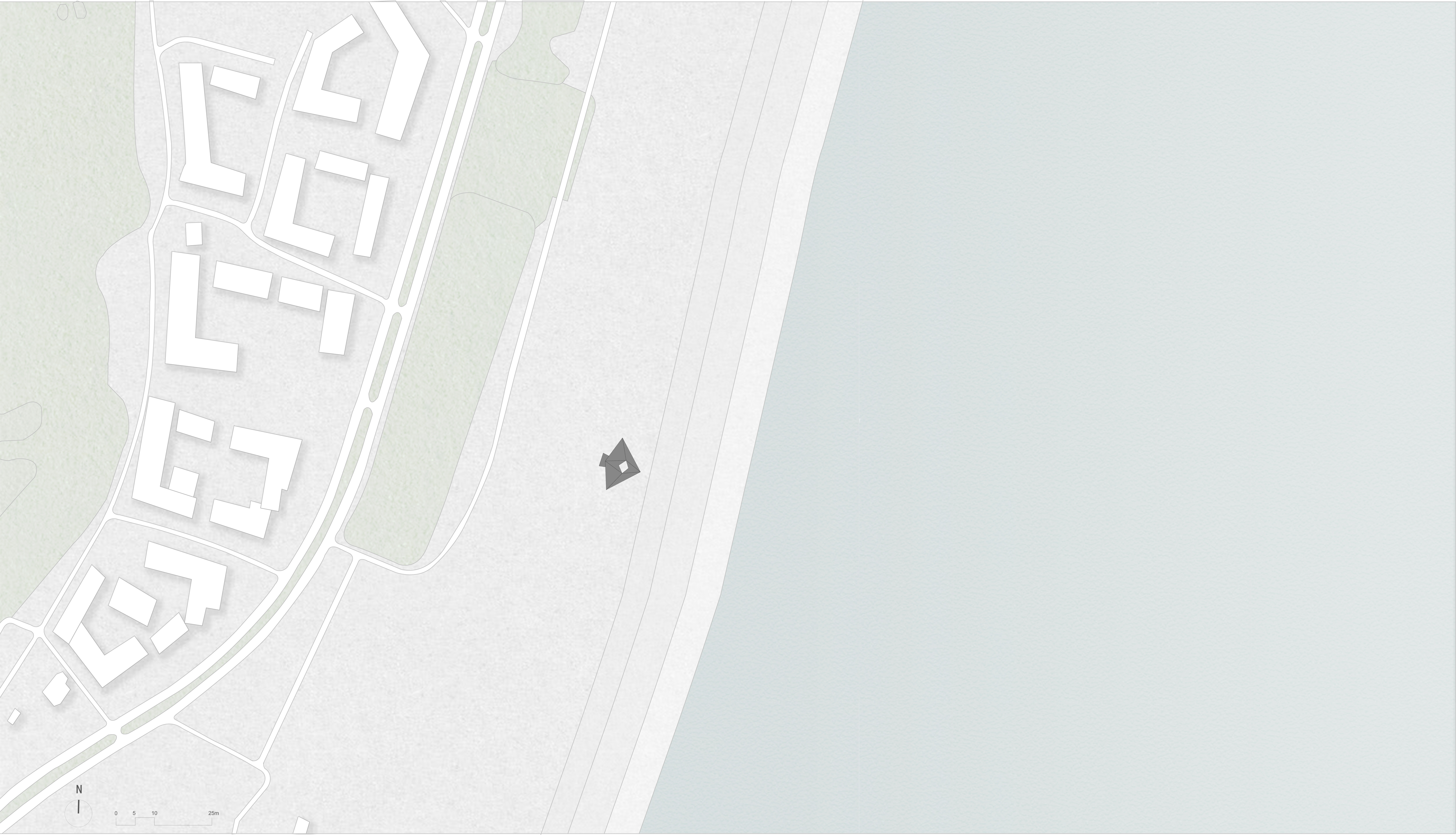
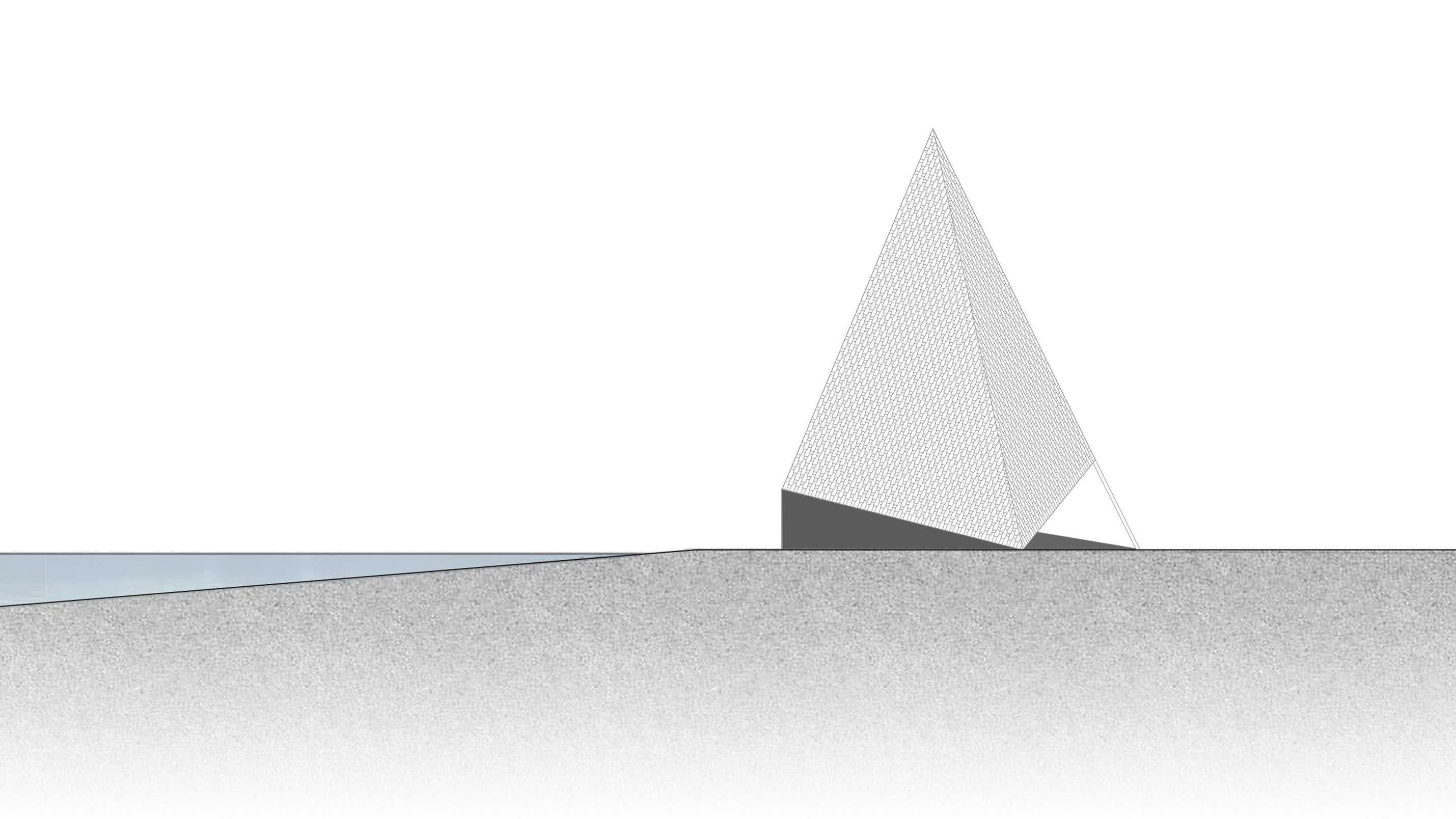
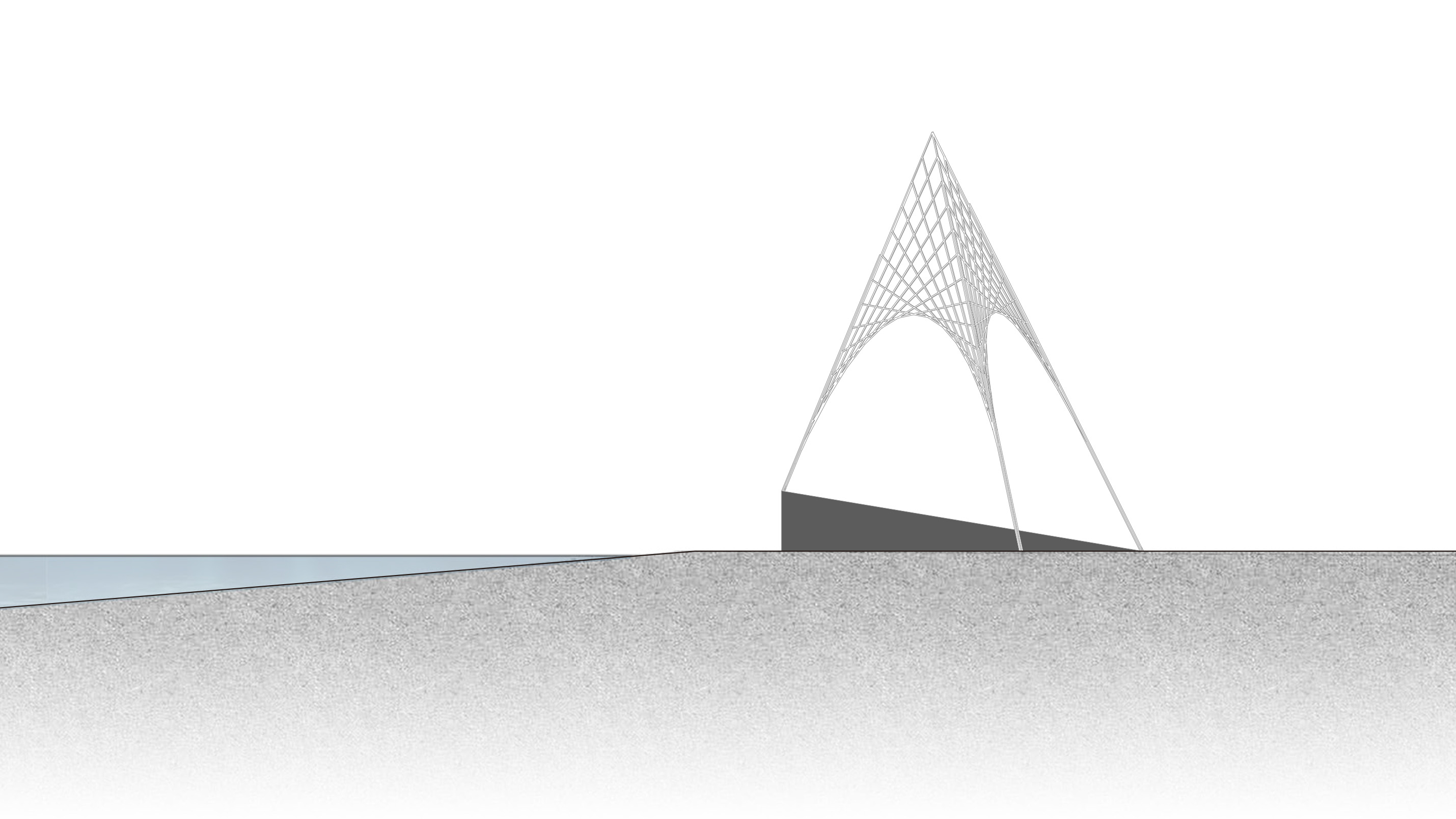
参考文献
[1]夏珩,陈佳镔,彭嫱. 粤东潮州乡村“蚁窑”群体的田野调查与建构研究[J]. 新建筑 2018(6):8-13.
完整项目信息
设计时间:2024年5⽉
建成时间:2024年6⽉
客户:阿那亚戏剧节,候⻦300
项⽬地点:河北秦皇岛
设计单位:合木建筑工作室(Atelier Heimat)
主持建筑师:张东光、刘⽂娟
设计团队:周颖、邢冬、⻢⽥阳(绘图)
合作艺术家:任爽
结构顾问:张准
施⼯管理:张⻓海、李杨、⽩焕义
策展⼈:刘畅、朱砂
摄影、视频素材:吕晓斌、在野照物所、星唯视觉
视频制作:⾼天霞
鸣谢:阿那亚戏剧节
版权声明:本文由合木建筑工作室授权发布。欢迎转发,禁止以有方编辑版本转载。
投稿邮箱:media@archiposition.com
上一篇:POPULOUS最新方案:沙特萨勒曼国王体育场
下一篇:无锡市新吴区新坊实验中学 / c+d设计中心